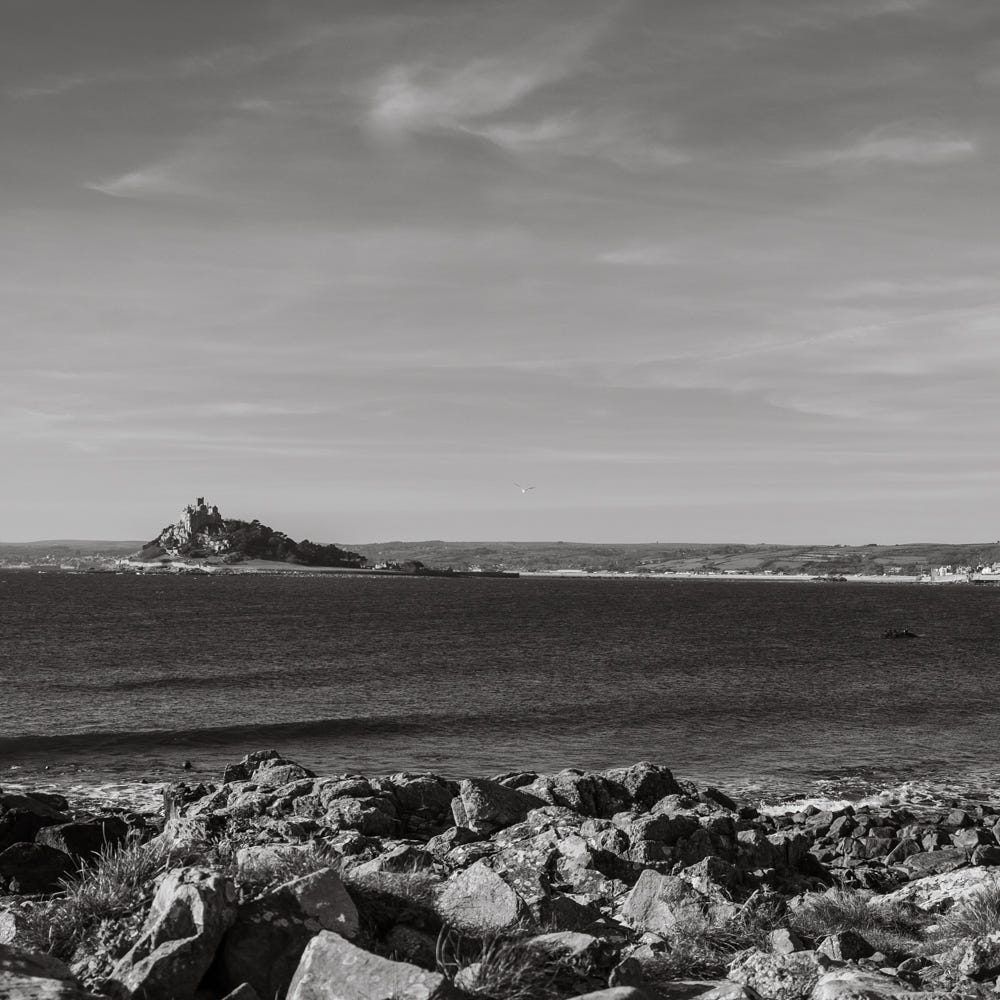Curlew, whimbrel, godwit?
It sounds like an ecclesiastical hierarchy.
“Who do I speak to about holding a jumble sale in the church?”
“Well, you need to email the curlew, they’ll send you a form that has to be signed by the whimbrel, then the godwit will make the final decision.”
To the uninitiated, distinguishing between wading birds – generally brown, leggy and beaky – can be as hard as knowing the difference between church ministers.
And when it comes to bird identification, I’m about as devout as those who sneak in at the back of Midnight Mass and mime O Come All Ye Faithful.
So, from this distance, sitting on a bench on a low, grassy cliff overlooking the rockpools of Trenow Cove, to the east of Marazion, it’s hard to know what I’m looking at.
We’re on the final stretch of a five-mile circular walk. At the start, with your attention drawn to St Michael’s Mount and sandy beaches stretching all the way to Penzance, it’s easy to miss Marazion behind you. Tight, pastel-painted terrace streets merge with wider roads and housing estates on the edge of a town which made an ambitious, if short-lived, bid to become a city.
The first of two cemeteries on this walk offers a tomb with a view from a sun trap overlooking the Mount.
A field of lavender, grey now, hints of new life to come in the spring and contrasts with the rotting, pungent remains of rejected cauliflowers in a field above the beach at Perranuthnoe.
The air is fresher at Trenow Cove where what I first think is a buoy stranded on the rocks turns out to be an egret, standing still and hunched in its white coat, like an umpire waiting for a fast bowler to come thundering past their shoulder.
The waders tiptoe into my binoculars’ sights – round and brown, on stilts, with long bills curved at the tip.
Curlews are my first thought. But curlews are rare, right? There’s been books written about it, songs sung about it.
The alternatives are rare too, though. Whimbrels and black-tailed godwits are also on the red list of endangered UK birds. And whimbrels shouldn’t even be around here at this time of year, so why do I think seeing them would be more likely than curlews?
Research then shoots down every argument I come up with for them not being curlews.
Curlews have that distinctive call that rises up towards a crescendo it never quite reaches, and these are just kind of peeping. Actually, curlews only make that sound in the breeding season.
Do these birds’ bills curve down at the tip enough? Actually, they could be males, whose bills are around a fifth the length of females’ and so the curve is less pronounced.
But curlews are rare! David Gray sang so. Well, yes, they are, but that doesn’t mean you’ll never see one – and you certainly shouldn’t give up trying to.
Curlews are endangered, seriously so – numbers in this country have plummeted by 48 per cent since the mid-1990s. So of course it’s vital that their plight is emphasised, but people have to also know that they can still see and hear them because then they will have something they want to protect.
Thirty per cent of western Europe’s curlew population spends its winter in the UK, and four days before this walk, according to the Cornwall Bird Watching and Preservation Society’s website, nine curlews were seen flying over Marazion.
So seeing them picking through these rockpools shouldn’t come as a surprise – but it should be treated as very special.
Basking sharks seen on this walk: 0
Total basking sharks seen to date: 0




